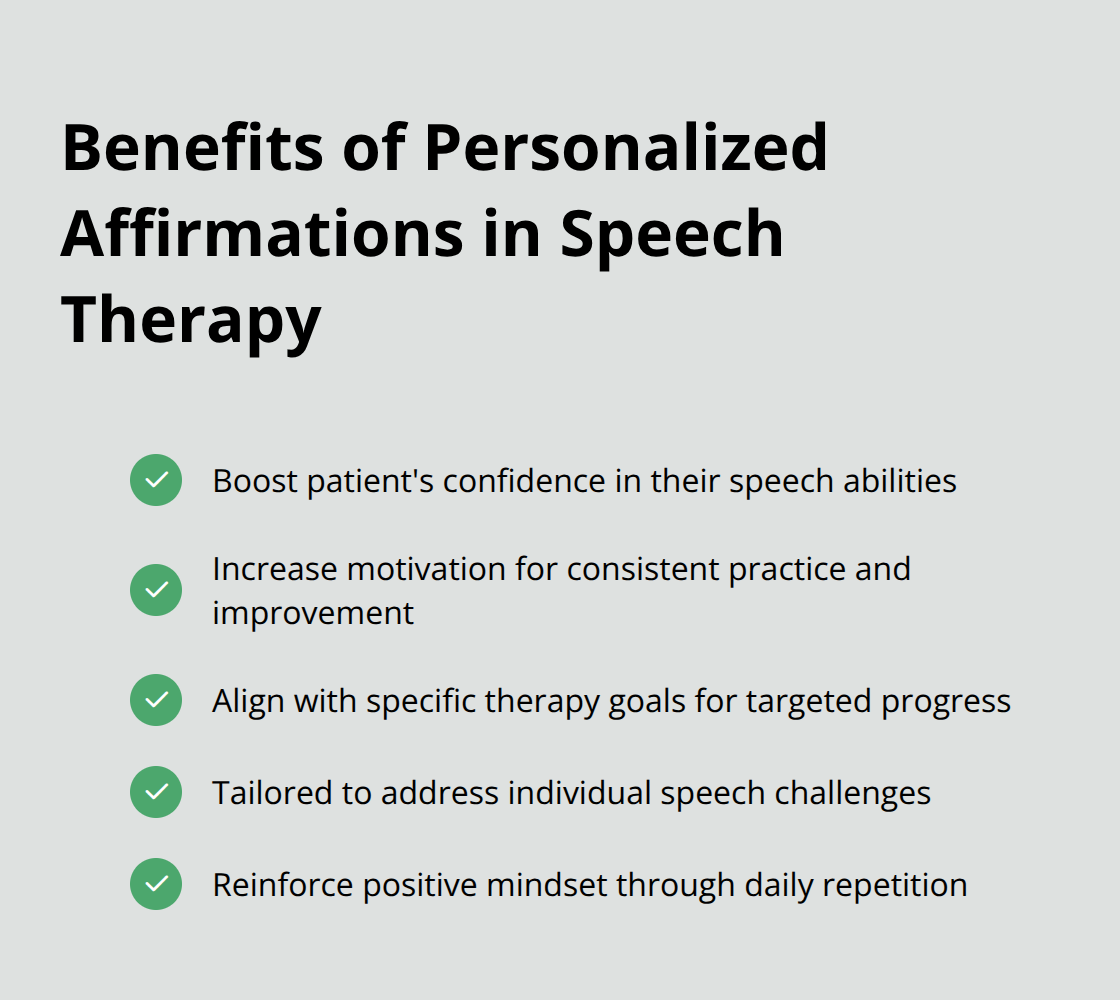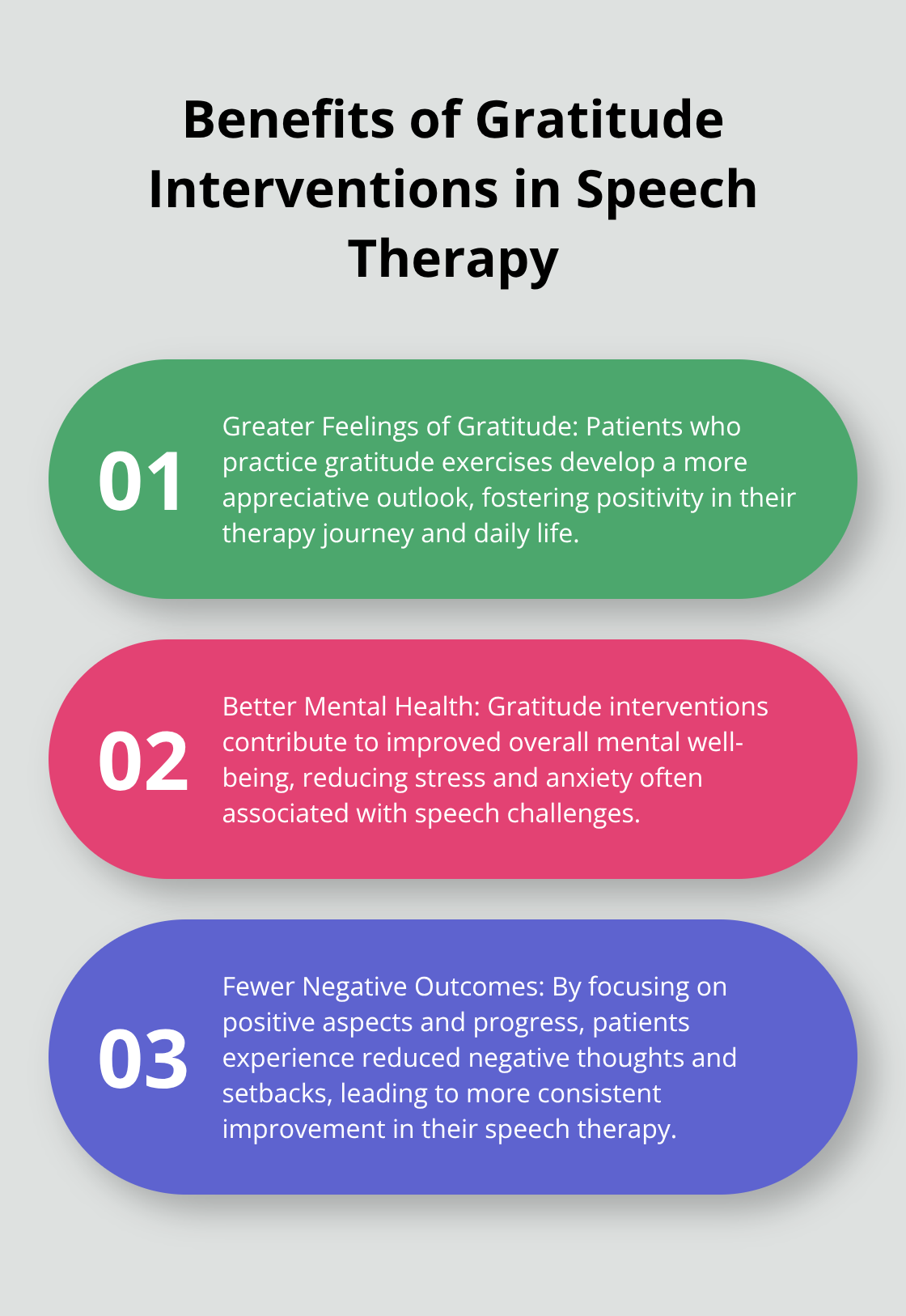At Global Positive News Network, we’re excited to explore the transformative power of a positive outlook in speech therapy.
Positive thinking can significantly enhance therapy outcomes, benefiting both patients and therapists alike.
In this post, we’ll share practical techniques for creating an uplifting environment and incorporating positive affirmations into speech therapy sessions.
How Positivity Transforms Speech Therapy
The Power of Positive Reinforcement
Positive thinking in speech therapy isn’t just a feel-good approach; it’s a game-changer. Positive reinforcement accelerates learning and progress. This isn’t about making people feel good; it’s about creating a brain-friendly environment for learning and change.
Confidence and Motivation Boost
When patients believe in their ability to improve, they put in more effort. A growth mindset helps children (and adults) to develop a passion for learning and helps them not to be discouraged by failure or mistakes. In speech therapy, this translates to patients who practice difficult sounds or techniques more willingly, leading to better long-term results.
Anxiety Reduction and Enhanced Productivity
Anxiety can block progress in speech therapy. A positive environment lowers stress levels, allowing patients to focus on their exercises. This physiological change leads to more productive sessions and faster progress.
Therapist Well-being and Effectiveness
Positivity benefits therapists too. Speech therapists who maintain a positive outlook report higher job satisfaction and lower burnout rates. This translates to more engaged, effective therapists who provide better care to their patients.
Creating a Cycle of Improvement
Positivity in speech therapy creates a powerful cycle of improvement. Patients feel more confident, therapists stay motivated, and progress accelerates. This positive approach doesn’t just transform therapy rooms; it has the potential to impact all aspects of life.
As we move forward, let’s explore practical techniques for fostering a positive environment in speech therapy sessions. These strategies will help both therapists and patients harness the transformative power of positivity for better outcomes.
Creating a Positive Therapy Environment
Design a Welcoming Space
The physical environment of your therapy room sets the tone for each session. Blue light increases subjective alertness and performance on attention-based tasks. Paint walls in soft, warm tones or add colorful artwork. Natural light is ideal, but if that’s not possible, use full-spectrum lighting to mimic daylight and reduce eye strain.

Comfortable seating is essential. Invest in chairs that provide good support and can be adjusted for different heights. For younger patients, include child-sized furniture and soft floor mats for activities.
Organize materials neatly and within easy reach. This not only looks professional but also minimizes disruptions during sessions. Use clear, labeled storage containers to keep everything tidy and accessible.
Use Positive Language and Tone
The way we communicate can dramatically impact a patient’s motivation and progress. Always use encouraging language that focuses on effort and improvement rather than perfection. Instead of saying “That’s wrong,” try “Let’s try that again. I know you can do it!”
Maintain a warm, friendly tone throughout the session. Smile often and use open body language to create a welcoming atmosphere. This helps patients feel at ease and more willing to take risks in their speech practice.
Avoid negative words or phrases that might discourage patients. Replace “don’t” or “can’t” with positive alternatives. For example, instead of “Don’t mumble,” say “Let’s practice speaking clearly and confidently.”
Celebrate Progress, Big and Small
Recognizing achievements (no matter how small) can significantly boost a patient’s confidence and motivation. Create a “Wall of Fame” where patients can display their accomplishments. This could be a bulletin board with certificates, stickers, or photos of patients reaching their goals.
Implement a reward system tailored to each patient’s interests and age group. This could range from stickers for younger children to a point system for older patients that they can redeem for small prizes or privileges.
End each session by highlighting specific improvements or efforts made during that day. This reinforces positive behavior and sends patients off on a high note, eager to return for their next session.
Foster a Growth Mindset
Encourage patients to view challenges as opportunities for growth. Teach them that mistakes are a natural part of the learning process (and not something to be ashamed of). Use phrases like “You’re making progress” or “Your hard work is paying off” to reinforce this mindset.
Display motivational quotes or success stories around the therapy room. These visual reminders can inspire patients and keep them focused on their goals. Try to rotate these regularly to maintain interest and provide fresh motivation.
Now that we’ve explored how to create a positive therapy environment, let’s move on to specific techniques for incorporating positive affirmations and exercises into speech therapy sessions.
Harnessing the Power of Positive Self-Talk in Speech Therapy
Crafting Personalized Affirmations
Personalized affirmations boost a patient’s confidence and motivation in speech therapy. Speech therapists should work with each patient to create affirmations that align with their specific goals and challenges. For example, a patient who struggles with fluency might use “I speak clearly and confidently at my own pace.” Patients should repeat these affirmations daily, both in and outside of therapy sessions.

Perceived self-efficacy has been shown to reduce depressive symptoms and predict positive health behavior change. This finding underscores the importance of positive self-talk in therapy settings.
Implementing Gratitude Journaling
Gratitude exercises shift focus from challenges to progress. Speech therapists should introduce a “Gratitude Journal” as part of the therapy routine. At the start or end of each session, patients should write down three things they appreciate related to their speech progress. This could be as simple as “I practiced my exercises every day this week” or “I’m thankful for my family’s support in my speech journey.”

Patients who undergo gratitude interventions experience greater feelings of gratitude, better mental health, and fewer negative outcomes. These benefits significantly enhance the therapy experience and outcomes.
Using Visualization Techniques
Visualization techniques effectively boost confidence and performance in speech therapy. Speech therapists should guide patients through visualizations of successful speaking scenarios. For instance, patients should imagine confidently giving a presentation or easily ordering at a restaurant. Patients should engage all their senses in these visualizations, making the experience as vivid as possible.
A study published in the Journal of Imagery Research in Sport and Physical Activity found that mental imagery improves performance in various tasks. This technique particularly benefits patients preparing for real-world speaking situations.
Incorporating Positive Exercises into Daily Routines
To maximize the benefits of positive self-talk, speech therapists should encourage patients to make these practices a regular part of their daily routines. This consistency reinforces the positive mindset and accelerates progress in therapy.
Patients should set aside specific times each day for their affirmations, gratitude journaling, and visualization exercises. (For example, they might practice affirmations in the morning, do a quick visualization before challenging speaking situations, and write in their gratitude journal before bed.)
Measuring Progress and Adjusting Techniques
Speech therapists should regularly assess the effectiveness of these positive self-talk techniques for each patient. They should track improvements in confidence, motivation, and speech outcomes. Based on these assessments, therapists can adjust the techniques or introduce new ones to ensure continued progress and engagement.
(Therapists might use simple rating scales or questionnaires to measure patients’ perceived confidence and motivation levels over time.)
Final Thoughts
A positive outlook in speech therapy transforms outcomes for patients and therapists alike. It creates a powerful cycle of improvement, boosting confidence and accelerating progress. Patients who develop this mindset often apply it to other areas of their lives, becoming more resilient and motivated overall.
Speech therapists who embrace positivity experience increased job satisfaction and reduced burnout. This allows them to provide better care and support to their patients. The strategies discussed, such as personalized affirmations and gratitude exercises, can significantly enhance the therapy experience when applied consistently.
We at Global Positive News Network believe in the power of positivity to change lives. Speech therapists can inspire progress and confidence in their patients through positive experiences (much like we curate uplifting news to inspire peace and optimism). Positive outlook speech therapy opens doors to improved communication, enhanced self-esteem, and better quality of life for those we serve.




